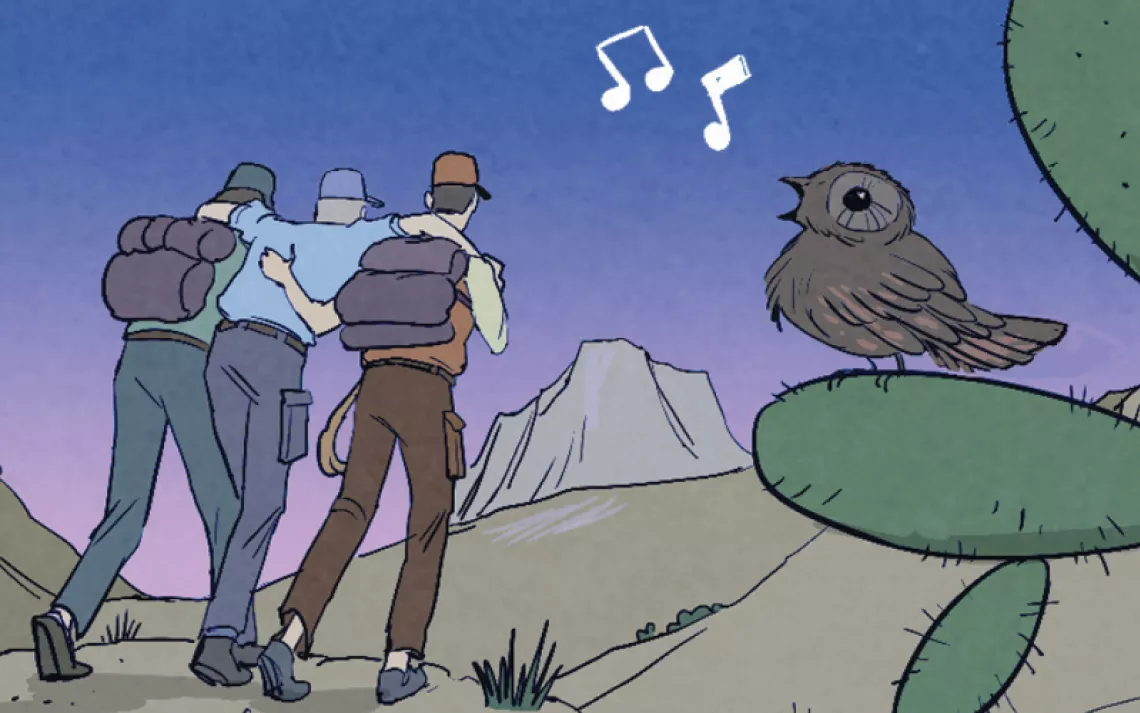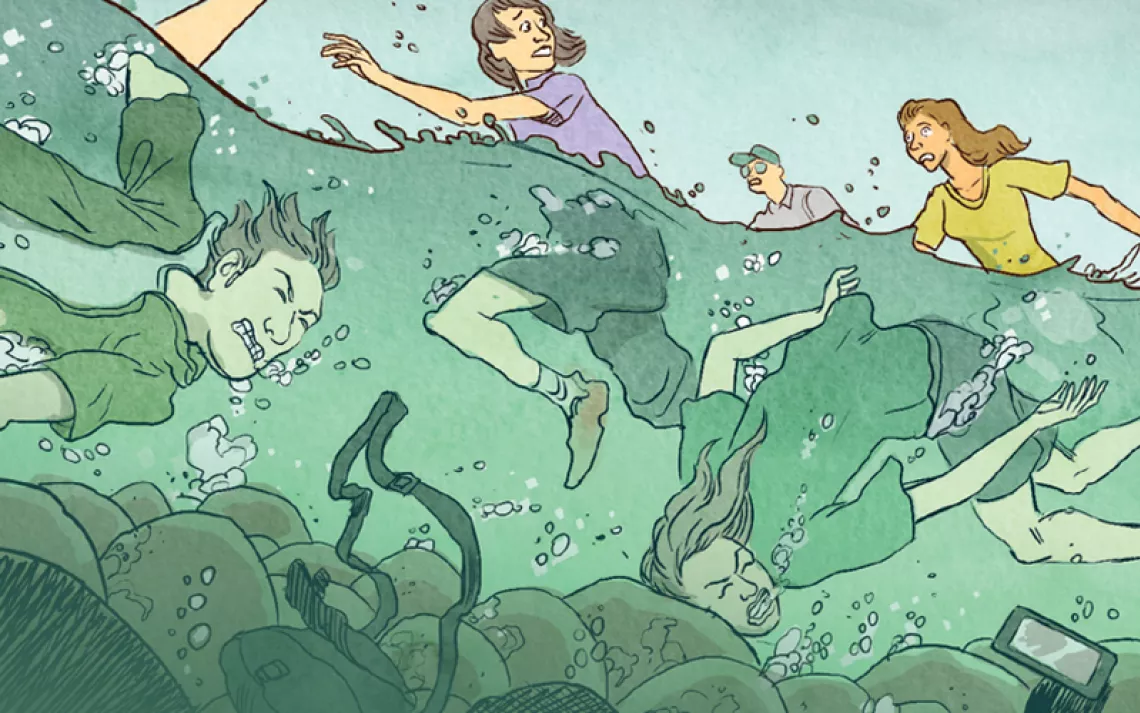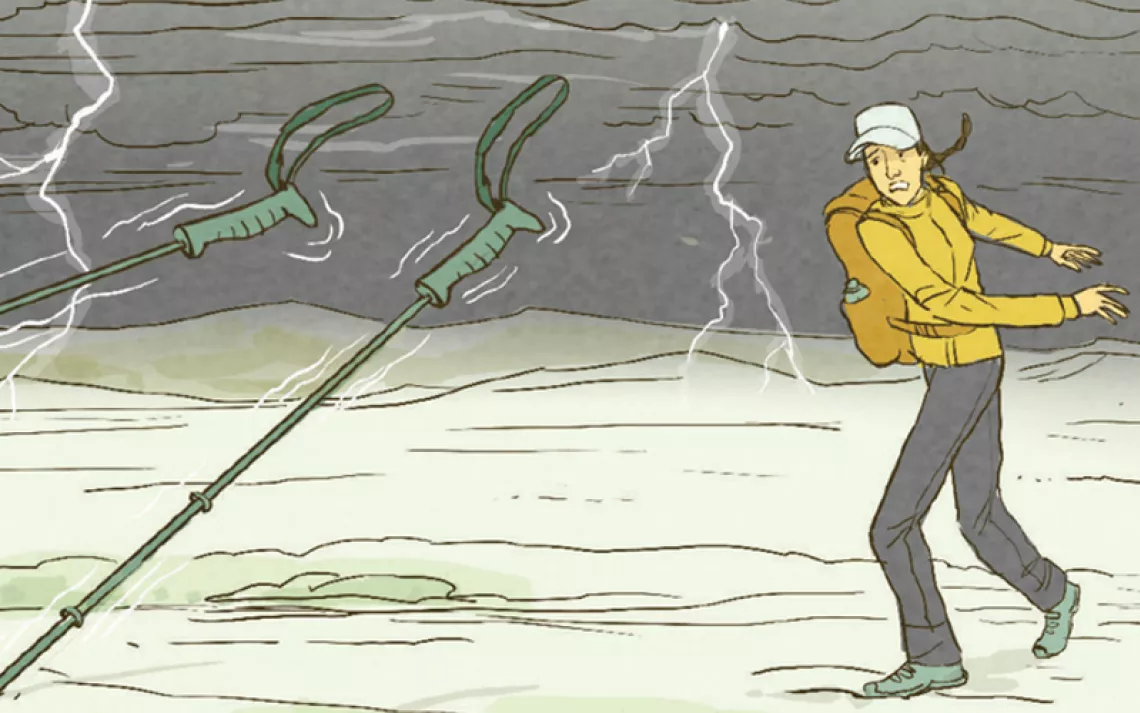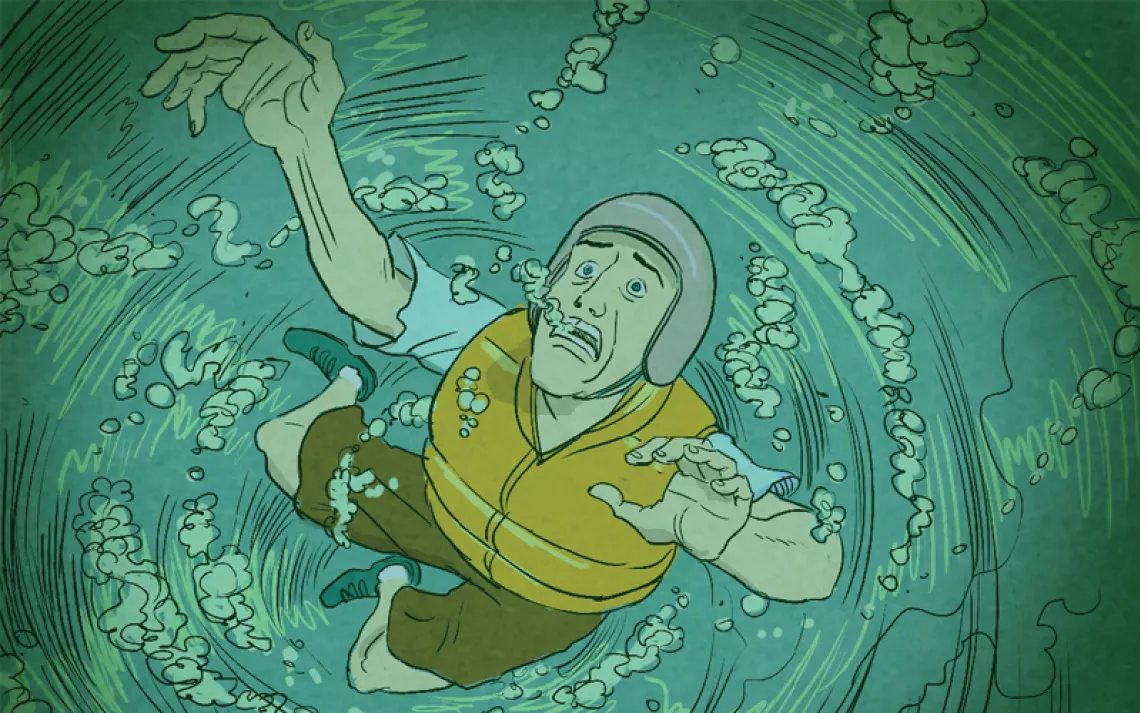Humungo Splinter, No Tweezers
Without a first-aid kit, you're left to rely on the kindness of strangers
The Opal Creek Wilderness in Oregon's Willamette National Forest has many attractions, like a trio of surreal turquoise pools and a rare low-elevation old-growth forest. But on this hike, my friend Evan and I headed to an old mining camp called Jawbone Flats.
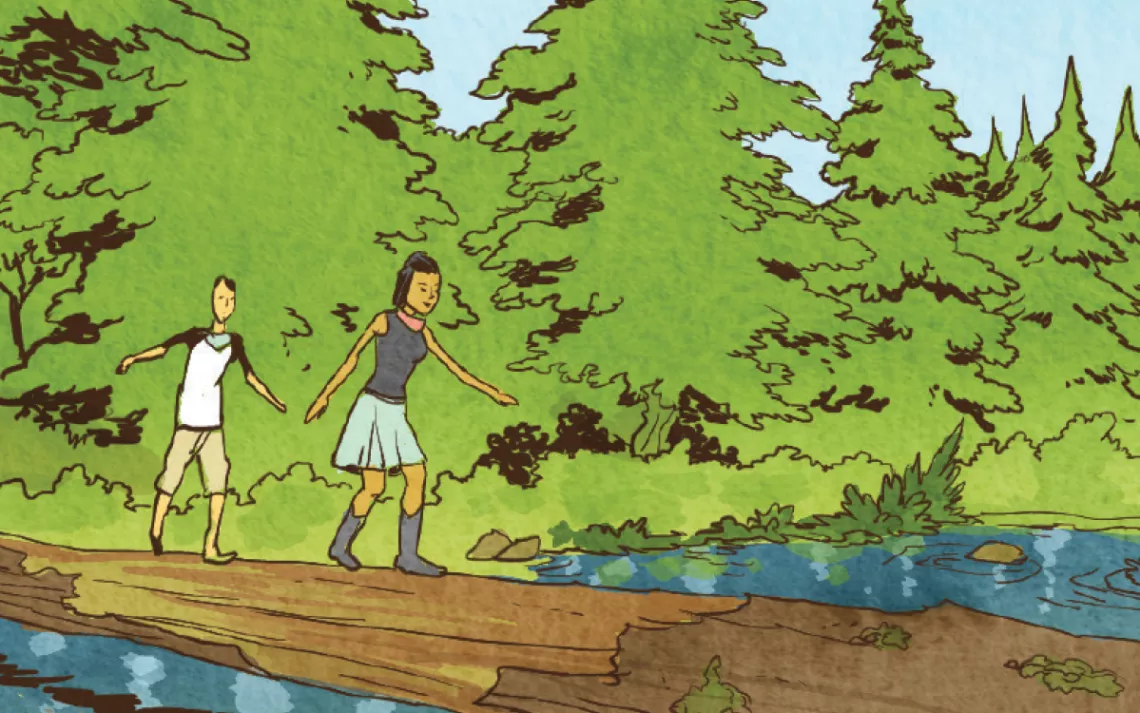
We hiked in three miles, past waterfalls, open mine shafts, and antique mining equipment.
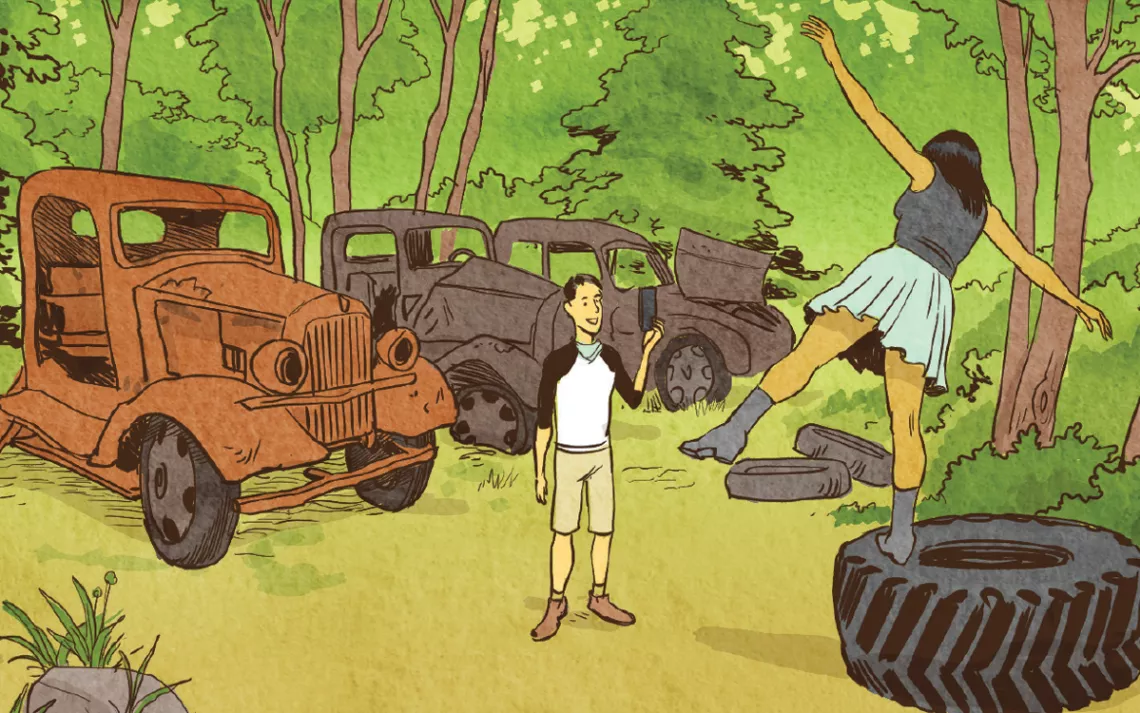
We found a bevy of old cars and trucks left over from the 1930s. Soon we were staging an impromptu photo shoot, balancing atop jumbo tractor wheels.
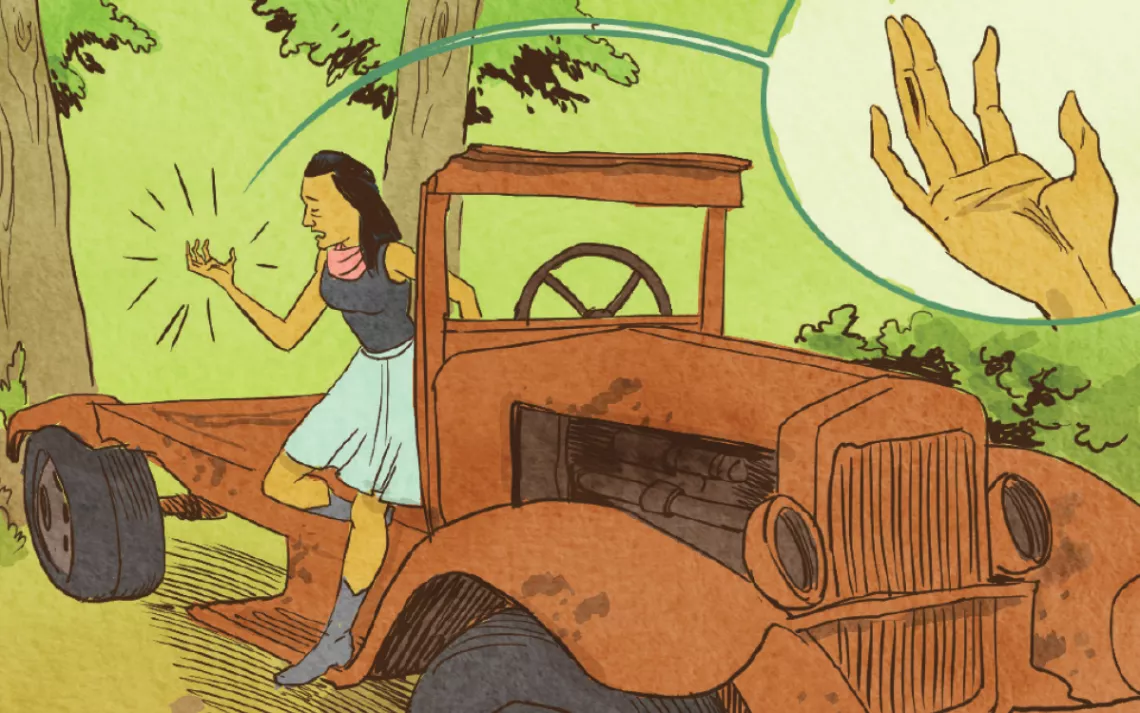
While climbing onto the wooden bed of an ancient truck, I got the largest splinter of my life—so big, I couldn’t even bend my finger—but we didn’t have a first-aid kit.
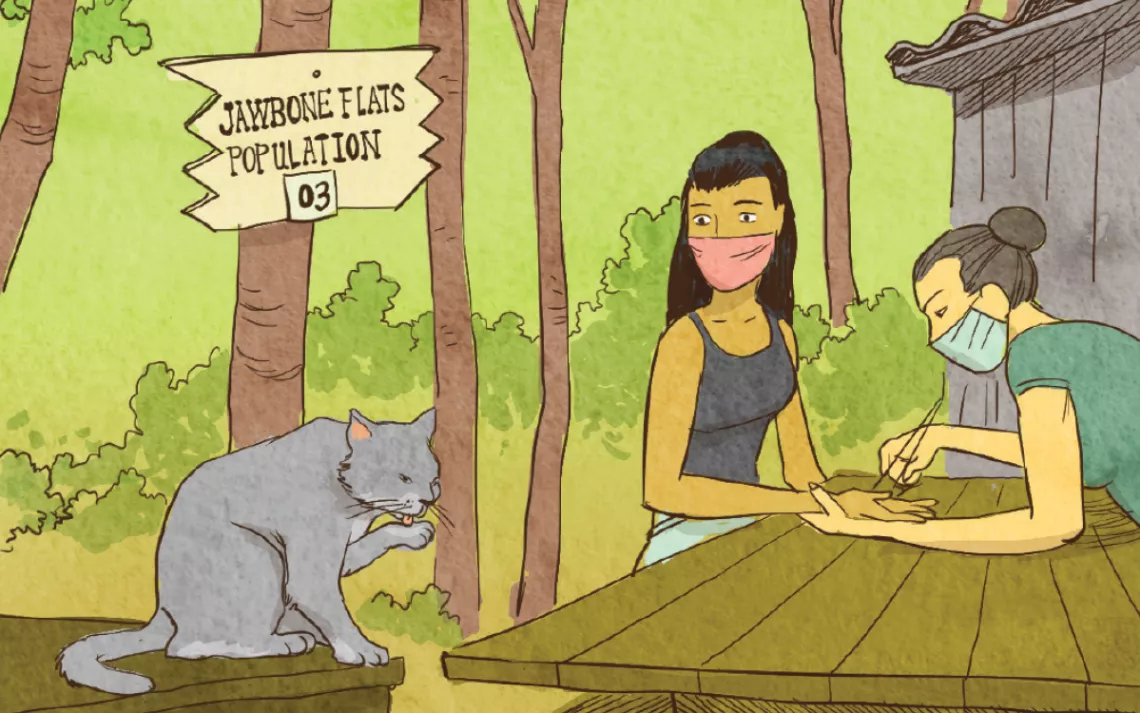
We saw a sign for a town and were lucky to find some folks at home. One extracted the splinter while I concentrated on the resident cat, the mayor of Jawbone Flats.This article appeared in the September/October 2020 edition with the headline "Jawbone Flats."
Ask the Expert
John Soares is the author of 100 Classic Hikes: Northern California.
“Things can go wrong on even the easiest day hike. That’s why you should always bring the ’10 essentials,’ which include a first-aid kit with tweezers. Nilina was wise to ask strangers for help, but it’s best to be as self-sufficient as possible so you won’t need help in the first place.”
 The Magazine of The Sierra Club
The Magazine of The Sierra Club
